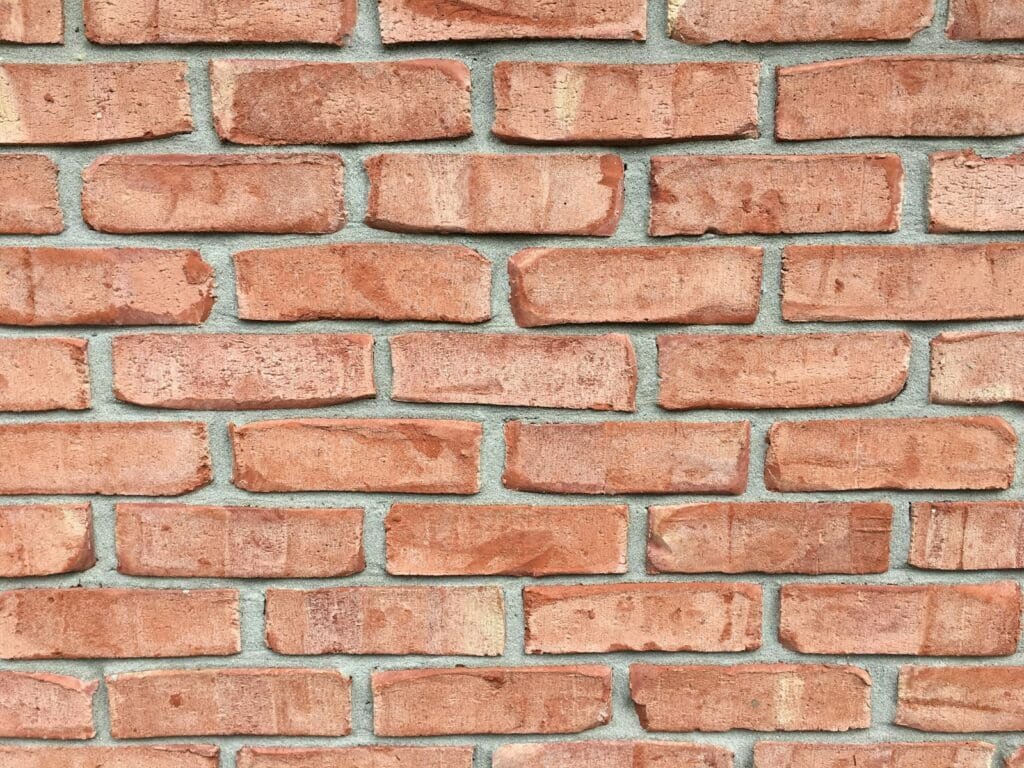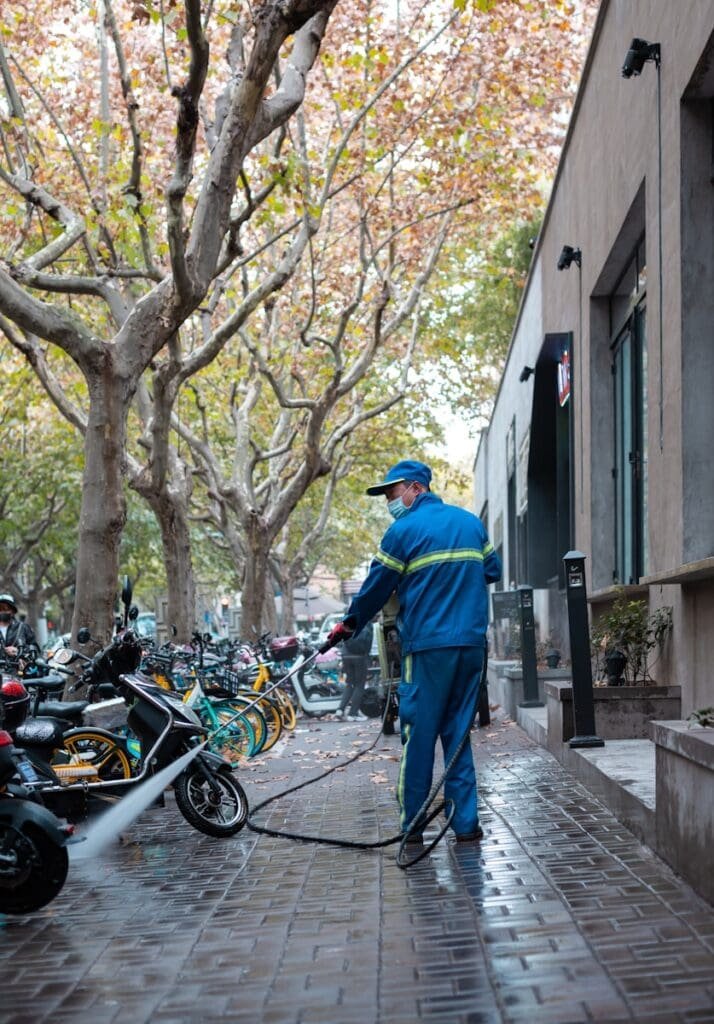Intro To Masonry Cleaning in Construction
“Cleanliness is next to godliness,” as the famous saying goes. But when it comes to construction, cleaning isn’t just about appearances.
Masonry cleaning can significantly impact the structural integrity and longevity of buildings. Did you know that proper cleaning can extend the lifespan of masonry structures?
In this article, we’ll cover the essentials of masonry cleaning. We’ll discuss why it’s important, explore various cleaning methods, and highlight best practices and common issues.
By the end, you’ll have a clear understanding of how to choose the right cleaning technique and maintain both the beauty and durability of your masonry structures.
Table of Contents
Understanding Masonry Cleaning in Construction

Definition of Masonry Cleaning
Masonry cleaning refers to the process of removing dirt, stains, and harmful deposits from masonry surfaces, such as brick, stone, and concrete. This cleaning is essential to maintain the structural integrity and aesthetic appeal of buildings.
Why Masonry Cleaning is Important
- Preservation: Protects the material from long-term damage.
- Aesthetic: Enhances the appearance of the building.
- Structural Integrity: Prevents deterioration caused by pollutants.
- Longevity: Extends the lifespan of the masonry work.
Types of Masonry Cleaning Methods
Water Cleaning
- Low-Pressure Washing: Uses water at low pressure to remove superficial dirt and grime.
- Steam Cleaning: Combines heat and moisture to clean surfaces without chemicals.
Chemical Cleaning
- Acidic Cleaners: Typically used for removing efflorescence and mortar stains.
- Alkaline Cleaners: Effective for stripping away organic stains, like those from vegetation.
- Biocides: Used to remove mold, mildew, and other organic growth.
Mechanical Cleaning
- Abrasive Blasting: Utilizes sand, glass beads, or other media to blast away contaminants.
- Grinding and Sanding: Mechanical tools are used for more localized cleaning and polishing.
Choosing the Right Method
| Method | Pros | Cons |
|---|---|---|
| Water Cleaning | Environmentally friendly, suitable for light stains | Not effective for heavy staining, may cause water damage |
| Chemical Cleaning | Highly effective for various stains | May require neutralization, potential environmental concerns |
| Mechanical Cleaning | Effective for heavy contaminant removal | Can damage delicate masonry, often noisy |
Best Practices for Masonry Cleaning
- Testing: Always test a small, inconspicuous area before full-scale cleaning.
- Follow Manufacturer Guidelines: Use products and equipment per the manufacturer’s instructions.
- Protect Surrounding Areas: Shield windows, vegetation, and other sensitive areas from potential damage.
- Use Appropriate PPE: Personal protective equipment is crucial to prevent injuries during cleaning.
Common Issues and Solutions
- Efflorescence: A white, powdery deposit commonly caused by water-soluble salts. Acidic cleaners can be used for removal.
- Mold/Mildew: Treat with biocides followed by thorough rinsing.
- Staining: Identify the type of stain; organic stains may require alkaline cleaners, while rust and iron stains might need specific chemical treatments.
For further details and more in-depth information on masonry cleaning techniques and guidelines, visit the official site of the Historic England organization.
Optimal Masonry Cleaning Techniques

Challenges in Masonry Cleaning
Cleaning masonry isn’t always straightforward. Various factors can complicate the process, making it essential to understand the challenges to choose the right cleaning method.
- Material Sensitivity: Different types of masonry react differently to cleaning methods. For instance, soft stone can be easily damaged by abrasive techniques.
- Age of Building: Older buildings may have fragile masonry that can’t withstand aggressive cleaning methods.
- Type of Stain: Knowing the exact type of stain present is crucial as it determines the cleaning method and chemical agents required.
- Environmental Conditions: Weather and surrounding environment impact both the cleaning process and the longevity of the results.
Advanced Masonry Cleaning Techniques
Newer methods are designed to address specific challenges.
Laser Cleaning
Laser cleaning is a highly controlled method that uses laser technology to remove contaminants without abrasive action. It is particularly effective for delicate surfaces and detailed masonry work.
- Precision: Allows for precise targeting of contaminants, minimizing the impact on the masonry.
- Non-Abrasive: Reduces the risk of damaging sensitive materials.
- Environmentally Friendly: Doesn’t require chemicals or produce secondary waste.
Poulticing
Poulticing involves applying a paste or poultice material over the stain, allowing it to absorb and pull the stains out of the masonry over time.
- Customized Solutions: Specific poultices can be created depending on the stain type.
- Effective for Deep Stains: Can draw out deep-seated contaminants that other methods might not reach.
- Minimal Surface Damage: Generally gentle on the masonry surface.
Factors to Consider for Effective Masonry Cleaning
Selecting the best method for cleaning masonry involves evaluating several factors to ensure the chosen technique is both effective and safe.
- Masonry Type: Determine whether the material is brick, stone, or concrete as this influences the cleaning method.
- Condition Assessment: Evaluate the current state of the masonry including any pre-existing damage or fragility.
- Stain Identification: Accurately identify the nature of the contaminants and stains present.
- Environmental Impact: Consider the environmental impact and regulations associated with different cleaning agents and methods.
Environmental and Safety Considerations
Safety and environmental impacts are paramount when conducting masonry cleaning. Adhering to best practices guarantees both the safety of workers and the preservation of the environment.
- Eco-friendly Products: Opt for environmentally safe cleaning agents whenever possible.
- Personal Protective Equipment: Equip workers with PPE including gloves, masks, and eye protection to reduce the risk of injury from chemicals and machinery.
- Containment and Disposal: Properly contain and dispose of runoff and waste materials to prevent environmental contamination.
- Training and Certification: Ensure that all personnel are properly trained and certified in the use of specialized cleaning tools and materials.
Cleaning Concrete Masonry Surfaces

Concrete Masonry Cleaning Techniques
Concrete masonry cleaning involves a specific set of techniques tailored to address the unique properties of concrete. It is crucial to choose the right method to avoid damaging the surface while effectively removing contaminants.
Pressure Washing
Pressure washing is one of the most common methods for cleaning concrete due to its effectiveness at removing dirt and stains.
- Medium to High Pressure: Medium to high pressure settings are often used to ensure thorough cleaning without damaging the concrete.
- Surface Pre-treatment: Applying a suitable degreaser or detergent before pressure washing can enhance results, especially on oil or grease stains.
- Surface Sealant: After cleaning, a sealant can be applied to protect the concrete and make future cleaning easier.
Acid Washing
Acid washing is another effective technique widely used for deep cleaning concrete masonry and preparing surfaces for new coatings.
- Hydrochloric Acid: Typically, a diluted hydrochloric acid solution is used to remove heavy deposits and stains like rust or mineral buildup.
- Neutralization: After acid washing, it is essential to neutralize the surface with an alkaline solution to prevent acid residues from harming the concrete.
- Safety Precautions: Use proper PPE and ensure good ventilation when working with acids.
Alkaline Cleaning
Alkaline cleaners are another option for cleaning concrete, especially when dealing with organic and oily stains.
- Effective on Oil Stains: Alkaline solutions are particularly effective at breaking down oils and grease that may penetrate the porous concrete surface.
- Rinsing: Thoroughly rinse the surface to remove any residual alkaline cleaner, preventing potential damage over time.
Specialized Concrete Cleaning Techniques
Sometimes, general cleaning methods may not suffice, and specialized techniques are required to handle tough situations.
Concrete Poulticing
Poulticing is employed for stubborn stains that have penetrated deep into the concrete.
- Custom Poultice Mixes: Specific poultice materials can be mixed to target different types of stains, such as oil or ink.
- Prolonged Application: The poultice is applied to the stained area and left for a period, allowing it to draw out the embedded contaminants.
Micro-abrasion
Micro-abrasion is a controlled, gentle abrasive technique suited for surface refinements or removing fine contaminants.
- Controlled Erosion: Uses micro-abrasive particles to scrub the surface lightly, ensuring minimal material removal.
- Finish Restoration: Ideal for restoring surfaces without extensive wear and tear typical of heavy abrasive methods.
Environmental and Safety Considerations for Concrete Cleaning
Proper environmental and safety protocols are crucial during concrete masonry cleaning to protect both workers and the surrounding area.
- Local Regulations: Comply with local environmental regulations regarding the disposal of cleaning agents and runoff.
- Waste Management: Implement effective waste management practices to handle hazardous materials, especially when using chemical cleaners.
- Safety Gear: Ensure workers use appropriate PPE, including gloves, masks, and eye protection, to minimize exposure to harmful substances.
Understanding Masonry Cleaning in Construction
Masonry cleaning is an essential aspect of building maintenance, involving the removal of dirt, stains, and harmful deposits from surfaces like brick, stone, and concrete.
The cleaning process preserves the material, enhances aesthetic appeal, and maintains structural integrity, thereby extending the lifespan of masonry work.
Different methods such as water, chemical, and mechanical cleaning are employed based on the type of surface and the nature of the contaminants.
Frequently Asked Questions – FAQs
What is the best method for cleaning masonry?
The best method depends on the masonry type and the nature of the stains. Water cleaning is gentle, while chemical and mechanical methods can tackle tougher stains.
Can I use household cleaners for masonry cleaning?
It’s recommended to use professional masonry cleaners as household cleaners may not be effective and could potentially damage the masonry.
How often should masonry be cleaned?
Frequency depends on environmental factors and exposure to pollutants. Generally, an annual inspection and cleaning as needed is advisable.
Are there eco-friendly cleaning options for masonry?
Yes, water cleaning methods and some chemical cleaners are environmentally friendly options. Always check the product labels for eco-friendly certifications.
What precautions should be taken during masonry cleaning?
Always test a small area first, follow manufacturer guidelines, protect surrounding areas, and use appropriate personal protective equipment (PPE).






